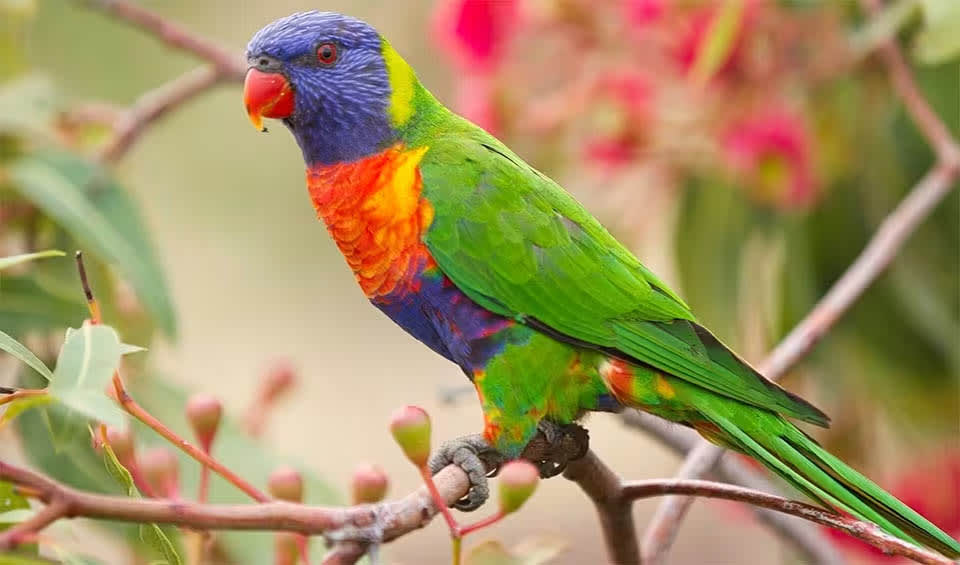Trichoglossus – True parrots
The most prominent color observed in all species is green hence the name true parrots
A vibrant and active group of lorikeets known for their brilliantly colored plumage and remarkable adaptations to a nectar and fruit-based diet. These small to medium-sized parrots are native to the Australasian region, including Australia, Indonesia, Papua New Guinea, and the Pacific Islands.
These birds are characterized by their vividly colored feathers, ranging from deep greens and blues to bright yellows, reds, and oranges. Their plumage not only serves aesthetic purposes but also plays a role in communication and mate selection. Many species within this genus exhibit colored bars or markings on their upper breast, which helps in distinguishing between species.
One of the most notable species within this genus is the Rainbow Lorikeet (Trichoglossus moluccanus), which boasts a rainbow of colors on its body and is easily recognizable by its dark chin, a blue or violet nape band, and an orange or yellow breast.
A unique feature of Trichoglossus lorikeets is their specialized brush-tipped tongue. The bristles, known as papillae, extend when the tongue is exposed, allowing the birds to effectively soak up nectar from flowers and soft pulpy fruits. This adaptation is a significant evolutionary trait that has enabled lorikeets to exploit food sources that other birds cannot easily access.
Lorikeets are known for their playful and gregarious nature. They can be quite territorial towards other bird species when it comes to their feeding areas but are often friendly and sociable with humans. In the wild, they are typically seen in pairs or small flocks and can become very noisy, especially in communal roosts.
While many Trichoglossus species are not currently considered endangered, habitat loss and degradation pose a threat to their populations. Conservation efforts are necessary to protect the habitats that these lorikeets rely on for food and nesting.
Species in this genus
Rainbow lorikeet
Most of their days are spent trying to fulfill their sugar cravings; the captive species have a strict sugary liquid diet


